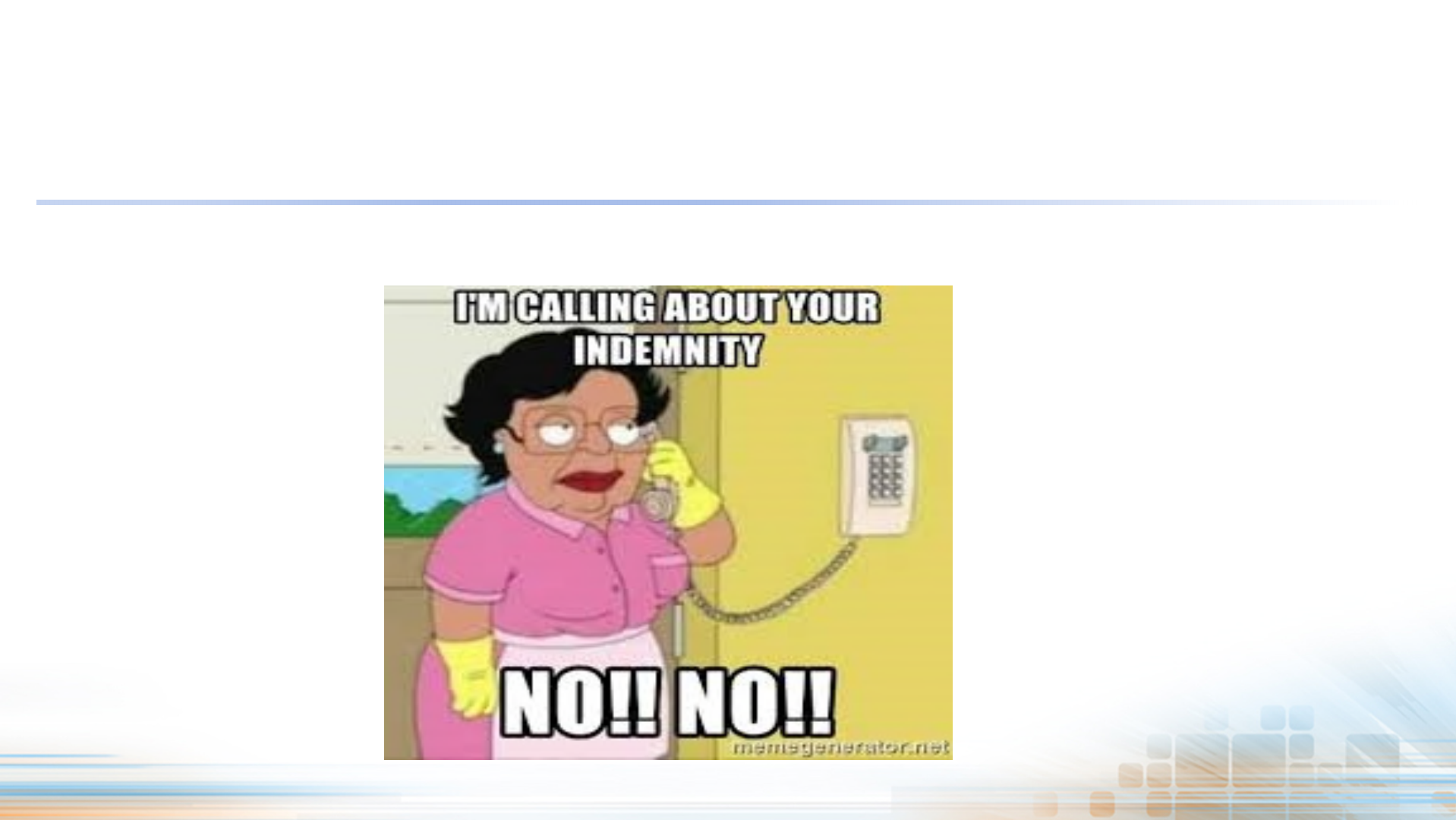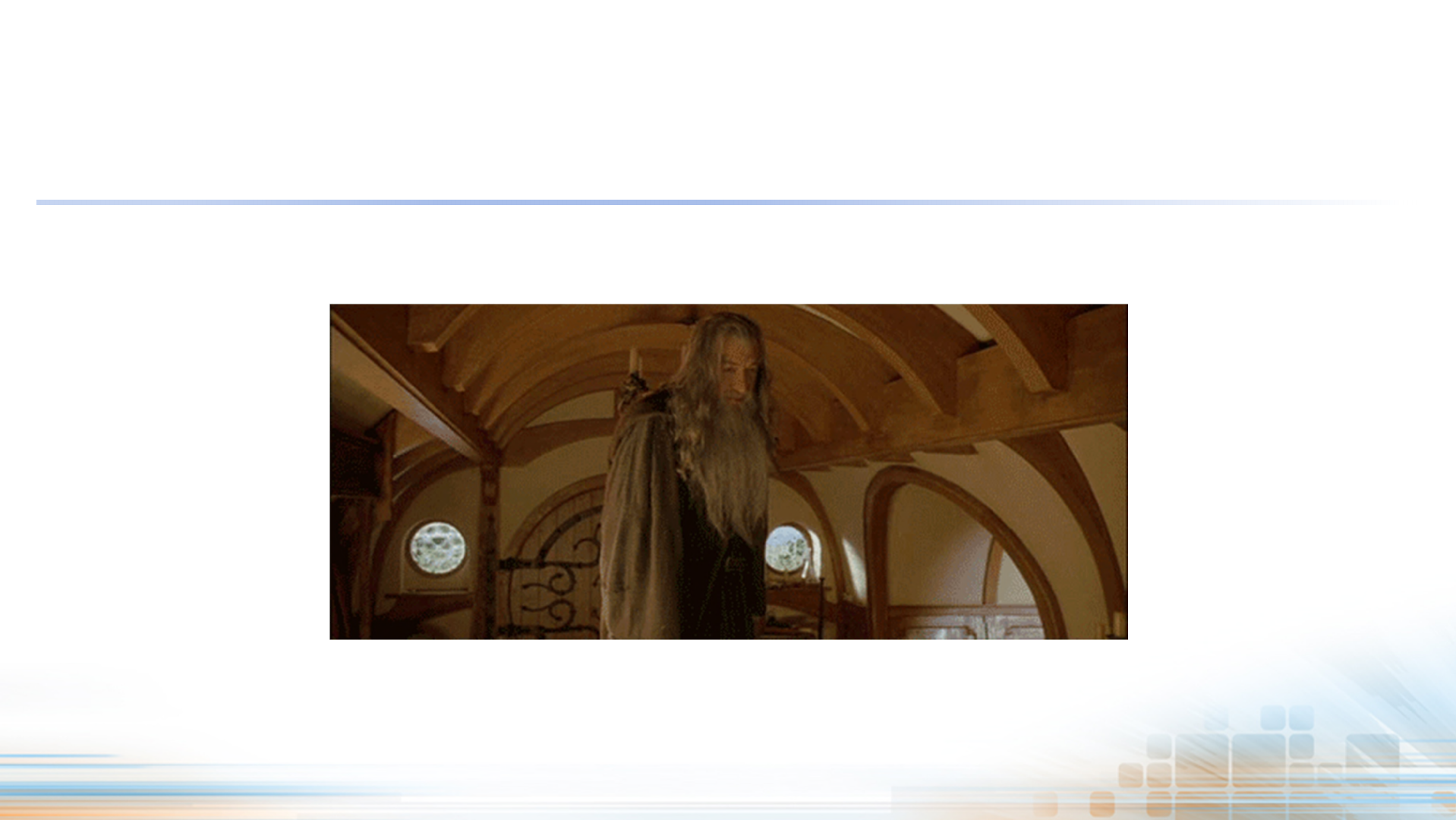
Indemnity & Limitations On Liability
Orchestrating The Instruments Of Your Contract In Harmony
Presented by Nancy Cundiff

3

4

• Admiralty, Maritime & Energy
Litigation
• Antitrust & Competition
• Appellate
• Asbestos Litigation
• Aviation
• Bankruptcy & Insolvency
• Behavioral Health Practice
• Class Action & Mass Tort
• Complex Business & Commercial
Litigation
• Construction
• Consumer Litigation Defense &
Financial Services
• Corporate
• Data Privacy & Cybersecurity
• Directors & Officers and
Securities Litigation
• Electronic Discovery, Information
Management & Compliance
• Eminent Domain & Inverse
Condemnation
• Entertainment, Media & Sports
• Executive Compensation &
Employee Benefits
• Fidelity
• Foreign Corrupt Practices Act
• Franchise & Distribution
• General Liability
• Government Investigations
• Government Relations
• Healthcare
• Healthcare Regulatory &
Compliance
• Hospitality
• Immigration
• Indian Nations
• Insurance Law
⎻ Bad Faith Litigation
⎻ Directors & Officers
Coverage
⎻ First Party Property
⎻ Insurance Coverage
⎻ Insurance Regulatory &
Compliance
⎻ Pollution Legal
Liability/Environmental
Impairment Liability
(PLL/EIL)
⎻ Reinsurance
• Intellectual Property &
Technology
• International Practices
⎻ Chinese Business &
Litigation
⎻ Japan Practice Group
⎻ Korean Business & Litigation
⎻ London Market Group
• Labor & Employment
⎻ ADA Compliance & Defense
⎻ BIPA (Illinois Biometric
Information Privacy Act)
⎻ Employment Advice &
Counseling
⎻ ERISA Litigation
⎻ FCRA Compliance &
Defense
⎻ Traditional Labor
⎻ Wage & Hour Class Actions
• Life Sciences
• Long-Term Care & Elder Law
• Medical Malpractice
• OSHA Safety & Health
• Products Liability
⎻ Consumer Warranty
• Professional Liability
⎻ Accountants Errors &
Omissions
⎻ Architects & Engineers
⎻ Legal Malpractice Defense
⎻ Miscellaneous Professional
Liability
⎻ School Districts &
Municipalities
⎻ Securities Litigation & FINRA
• Public Agency & Public Finance
• Railroad Practice
• Real Estate, Land Use &
Environment
• Securities & Corporate Finance
• Surety
• Tax
• Toxic Tort & Environmental
Litigation
• Trade Secrets & Non-Compete
Disputes
• Transportation
• Trial
• Water & Waste Water
• Workers’ Compensation
5

Risk Allocation Instruments
Keeping it in key and on tempo
6

Contractual Indemnity –
A Key Risk Allocation Instrument
• Undertaking to pay for:
→Future and existing
losses
→Future and existing
liabilities
7

Indemnities In a Nutshell
• A promise by A to compensate B if B incurs liability under a specific
type of claim
• Effect?
⎻ A is exposed to more financial risk / B can enjoy increased
compensation for the relevant claim
⎻ In practice this elevation can be less dramatic than sometimes
thought
8

Common examples
• Data
⎻ Privacy laws
⎻ Data corruption
• 3
rd
party claims
⎻ Intellectual property rights/ injuries/ property damage
• Breach of law/ regulation
• Confidentiality
• Deliberate acts
9

Indemnity Schemes
• Fault based
• Knock-for-knock/ mutual hold harmless
• Possession based
10

Fault Based Indemnity
11

Fault Based Indemnity
• Negligence
• Willful/ intentional conduct
• Breach of agreement
• Failure to comply with law
• Breach of representation
• Breach of warranty
• Injury
• Death
• Disease
• Property
12

Knock-For-Knock/Mutual Hold Harmless
• Typically energy sector
• Each party responsible for its own property and employees
*Consider impact of anti-indemnity statutes
13

Possession Based
Determined based on the party in possession of the property, project,
site, etc.
14

Forms of Indemnity Clauses
• Broad: indemnifies Receiver for any loss even if caused by the
Receiver's own negligence.
• Intermediate: indemnifies Receiver for entire loss if responsibility for
some of the loss can be placed on Giver.
• Limited: indemnifies Receiver only for the amount of the loss directly
attributable to Giver’s negligence.
15

Louisiana’s Anti-Indemnity Acts
• Louisiana Oilfield Anti-Indemnity Act (LOAIA) – La. R.S. 9:2780
• Louisiana Construction and Motor Carrier Anti-Indemnity Act –
La. R.S. 9:2780.1
• Public Works – La. R.S. 38:2195 and La. R.S. 38:2216(G)
16

Louisiana Oilfield Anti-Indemnity Act (LOAIA)
No indemnity for own negligence or fault—including strict liability—that
causes death or bodily injury to another
No waiver of subrogation or naming other party as an additional insured
on the indemnitor’s insurance policy to circumvent the LOAIA.
Marcel exception
LOAIA has broad scope and inconsistent interpretation
17

Louisiana Construction Anti-Indemnity Act
No indemnity for negligence, intentional acts or omissions of indemnitee,
or a third party over whom indemnitor has no control
Cannot circumvent by requiring indemnitor to purchase liability insurance
for acts or omissions of indemnitee or such third party. Must have
evidence indemnitee paid cost of such insurance.
Louisiana law prevails
18

Louisiana Construction Anti-Indemnity Act
• Construction contract definition includes agreements:
⎻ For the design, construction, alteration, renovation, repair or maintenance
⎻ Of buildings, structures, highways, roads, bridges, water lines, sewer lines, oil
lines, gas lines,
⎻ Appurtenances or improvements to real property
⎻ Including moving, demolition and excavation
• Does not include
⎻ dirt or gravel roads used to access oil and gas wells and associated facilities
⎻ oil flow lines and gas gathering lines from the point where product is co-
mingled for transportation.
19

Louisiana Construction Anti-Indemnity Act
Choice of Law/Venue
• La R.S. 9:2779 holds choice of forum and choice of law provisions invalid
• When one party is domiciled in Louisiana, and
• The work, materials, and equipment involve a construction project in
Louisiana
• Requires the lawsuit or arbitration to occur in Louisiana
• Voids provision requiring interpretation of the agreement under another
jurisdiction's law
• La. R.S. 9:2778 same provisions with respect to public contracts involving
the state or a political subdivision of the state
• Effectively prevents ability of a party to contract around application of
Louisiana Construction Anti-Indemnity Statute
20

Louisiana Motor Carrier Anti-Indemnity Act
No indemnity for negligence, intentional acts or omissions of indemnitee,
or a third party over whom indemnitor has no control
Cannot circumvent by requiring indemnitor to purchase liability insurance
for acts or omissions of indemnitee or such third party
Louisiana law prevails
21

Louisiana Anti-Indemnity Act – Motor Carriers
“Motor carrier transportation contract”:
any contract covering the transportation of property, for compensation or hire by a
motor carrier
entrance upon property for the purpose of loading, unloading, or transporting
property, for compensation or hire
or a service incidental to any such activity, including but not limited to storage of
property
Excludes those for agricultural products as defined in R.S. 9:3306 and timber
without limitation, except the Uniform Intermodal Interchange and Facilities Access
Agreement administered by the Intermodal Association of North America or other
agreements providing for the interchange, use, or possession of intermodal
chassis, containers, or other intermodal equipment
22

Louisiana Anti-Indemnity – Public works
La. R.S. 38:2195
Applies to public contracts
Prohibits requiring a public entity from assuming liability for damage
arising out of injuries or property damage to the contracting parties or
third parties caused by negligence of others
Post-1991
23

Louisiana Anti-Indemnity – Public Works
La. R.S. 38:2195
Does not prohibit provisions naming another as a co-insured or additional beneficiary
in a contract of insurance
Does not apply to intrastate intergovernmental contracts and to contracts with private
providers for the placement and care of persons in the custody of the state
Does not apply to contracts between any public entity and the owner of immovable
property when the purpose of such contract is to grant the public entity a servitude,
right of way, or other authority to go upon, construct works, perform activities, or
otherwise exercise control over or use the owner's property
24

Louisiana Anti-Indemnity – Public Works
La. R.S. 38:2216(G)
Prohibits provisions requiring contractor to hold harmless/indemnify public body for damages
arising out of injuries or property damage to third parties caused by the negligence of the public
body
Prohibits provisions requiring contractor to hold harmless/indemnify architect, landscape
architect, engineer, or land surveyor engaged by the public body for such damages caused by
the negligence of such architect, landscape architect, engineer, or land surveyor
Nullifies provisions which waive the rights of a contractor to recover delay damages / equitable
adjustment, for delays caused in whole, or in part, by acts or omissions within the control of the
contracting public entity
25

Louisiana Practice Tips
• Expressly state the intention to indemnify and the scope of the
indemnity
• To indemnify another party for their own negligence, specifically
support the provision with an insurance provision
• State that part of the contract consideration includes the indemnitor’s
recovery of the cost of the insurance for the indemnitee – must have
evidence of this
• Utilize a separate additional insured provision stating that it applies to
the indemnitee’s own negligence
26

Louisiana Practice Tips
• Use severability clauses to protect the remainder of the contract from
any invalid provision
• Cannot avoid Louisiana law or jurisdiction, but consider a venue
provision requiring disputes to be brought in a particular court or
parish of Louisiana
⎻ Avoids disputes in liberal parishes
⎻ Nominate a federal court in Louisiana
27

One Size Does Not Fit All
28

Common Indemnity Pitfalls
29

Common Indemnity Pitfalls
• Overlooking or failing to adequately address direct claims (scope)
• Excluding or insufficiently defining indemnification procedures
• Overlooking or failing to include a sole remedy provision
• Including an inconsistent limitation of liability provision
30

Parts of Indemnity
31

Parts of Indemnity
• Party giving/ party receiving
• What is given?
⎻Indemnify?
⎻Hold harmless?
⎻Defend?
• Scope of claims included
32

Parts Of Indemnity (cont.)
• Scope of damages included
• Triggers
• Indemnification procedures
• Rights after tender
• Statute of limitations
33

Parties Affected By Indemnity Agreement
• Reciprocal indemnity
• Third party beneficiaries
• Assignment provisions – consent required? Credit worthy?
• Consider Who Should Be Included:
⎻ Affiliates, partners, directors, employees, agents, representatives, insurers,
other contractors, subcontractors, co-lessees, co-owners, joint ventures, and
“lagniappe”
34

Hold Harmless
• Greater protection
• Receiver will not be held liable for identified actions
• Often used for activities or purchases that involve some degree of
unavoidable risk
• If you're holding another party harmless, it essentially means you may not
blame them for any loss or liability
35

Duty to Defend
• Broader then indemnity obligation – may apply whether or not third party
claim has merit
• Control and scope of defense
• Control of settlement
36

Goals of Receiver of Indemnity
• Broad language: all losses, liabilities, claims, causes of action
• Broad nexus phrase: ‘arising from’, ‘relating to’, ‘based upon’
• Known and unknown
• Direct and consequential
• Broad inclusion of related parties and entities
• Control of defense and settlement
• Notice does not affect duty to defend nor recovery of litigation
expenses incurred before tendering
37

Goals of Giver of Indemnity
• Be specific – exclude that which is not explicitly identified
• Narrow nexus phrase: ‘caused by’, ‘solely resulting from’, ‘to the extent they
arise out of’
• Look for limits on causes: death, injury, destruction of property, violation of law,
breach of representation or warranty
• Limit parties indemnified
• Strict notice requirements
• Consider alternatives: commercial or liquidated damages
• Sole remedy provision
38

Sole Remedy Provisions
• Protects the Giver by prohibiting the Receiver from successfully seeking
recourse for covered claims beyond indemnification
39

Sole Remedy Provisions
• Giver should seek to:
⎻ Include a comprehensive sole remedy provision.
⎻ Exclude either:
a cumulative remedies clause from the agreement; or
the indemnification clause from the cumulative remedies provision
• Receiver should seek exclusions for:
⎻ Equitable remedies (specific performance and injunctive relief)
⎻ Claims for fraud and willful misconduct (or willful breach)
40

More Indemnity Considerations
• Ensure direct claims vs. third party claims is clear
• Do you need to extend to third party claims?
• Allocation when fault is mutual
• Notice of claims required
• Choice of law
• Right to mitigate losses
41

Indemnity Is Not
42

Indemnity Is Not
• Surety
• Guarantee
• Contribution
• Release
43

Limitation of Liability Clauses -
44

Dangers of an Inconsistent Limitation of
Liability Provision
• Giver with power may demand:
⎻ Waiver of incidental and consequential damages
⎻ Monetary cap on indemnity
⎻ Carve-out of certain types of claims (e.g. third party IP claims,
product liability, environmental)
• Big impact on allocation of risk
45

Waiver of Incidental & Consequential Damages
• Typically disclaims indirect, consequential, incidental, punitive
and special damages
• Limits indemnifying party's liability regarding certain actual and
direct damages
• If your agreement contains both a consequential damages
waiver and an indemnification provision, you must negotiate
whether to exclude indemnification from the consequential
damages waiver
46

Waiver of Incidental & Consequential Damages
• Giver – Wants waiver of incidental and consequential damages for all claims
• Receiver – Wants to exclude the indemnity from the waiver, because otherwise:
⎻ The indemnified party must pay for indirect or consequential damages
stemming from third-party claims, even if these damages are caused by the
indemnifying party's bad acts
⎻ If the consequential damages waiver covers lost profits, lost revenues and
diminution in value, these types of damages may be comprised of direct
damages, and so the parties may inadvertently exclude some direct damages
from the indemnification coverage
47

Monetary Cap on Indemnification-Related Damages
• Giver wants this.
⎻ May appear either:
In a general limitation of liability clause covering all contract
liabilities (including indemnity)
As part of the indemnification provision
⎻May also ask for a threshold amount to trigger indemnity so
not on hook for all minor complaints and issues
48

Monetary Cap on Indemnification-Related Damages
• Receiver consideration: How does cap limit the ability to recover for
indemnifiable damages. Should seek to:
⎻ Raise the liability cap to an amount that is proportional to the risk it
has agreed to shoulder
⎻ Eliminate cap on indemnification by:
Excluding cap; or
Carving out indemnification provision from the cap
49

Unlimited Liabilities???
Mostly a matter of convention and negotiation
ALWAYS COMMON MOREAGGRESSIVE
• Death/Injury From
Negligence
• Fraud
• Breach of IP Rights
• Breach of Confidentiality
• Data Protection
• Willful Default
• IT Security
• Breach of Law/Regulation
• Specific Causes
50

Alternatives to Indemnity
• Relying on state common law or statute for recourse (e.g. bringing a lawsuit
for breach of warranty, breach of contract, or fraud)
• Conditioning the purchase price on fulfillment of certain conditions
• Using a right of offset by escrowing a part of the consideration with a third
party
• Deferring payment so that the indemnified party can deduct potential
indemnity payments from future payments
• Quarantine the transaction related risk (e.g. Buyer uses its own subsidiary
to purchase the seller or the seller’s assets
• Provide contractual work-arounds for anticipated problems (e.g. requiring
the infringing party to provide a non-infringing replacement in the event of
intellectual property infringement)
51

Innovation in Risk Management and Allocation
• Ask tough questions about your client’s processes
• Explore the needs of your clients and imagine new ways to satisfy
them
• Be creative with both your questions and assumptions to identify the
unique challenges presented to your clients and develop innovative
solutions
52

What’s Missing?
• Sample mutual indemnification, limited to third party claims and damages:
• Each Party hereby agrees to indemnify, defend and hold the other Party, its Affiliates, its
licensees, its licensors, and its and their officers, directors, employees, consultants,
contractors, sublicensees and agents (and, in case of such licensors, their trustees,
faculty, medical and professional staff and students) (collectively, “Representatives”)
harmless from and against any and all damages or other amounts payable to a Third
Party claimant, as well as any reasonable attorneys’ fees and costs of litigation
(collectively, “Damages”) arising out of or resulting from any claim, suit, proceeding or
cause of action (each, a “Claim”) brought by a Third Party against a Party or its
Representatives based on: (a) breach of any representation or warranty by the
Indemnifying Party contained in this Agreement, (b) breach of any applicable Law by such
Indemnifying Party, or (c) gross negligence or willful misconduct by such Indemnifying
Party, its Affiliates, or their respective employees, contractors or agents.
53


